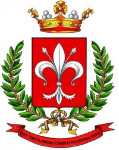Porta Sant' Agata
Ultimo aggiornamento: 23 ottobre 2023, 11:56
Porta Sant'Agata
Detta anche Porta del Borgo, dal I sec. a.C. era il punto d'ingresso alla città per chi proveniva dalla Via Latina (nel medioevo sostituita dalla Via Casilina, che in parte ne ricalcava il tracciato): il lastricato romano è sotto l'attuale pavimentazione.
Detta anche Porta del Borgo, dal I sec. a.C. era il punto d'ingresso alla città per chi proveniva dalla Via Latina (nel medioevo sostituita dalla Via Casilina, che in parte ne ricalcava il tracciato): il lastricato romano è sotto l'attuale pavimentazione.
Partiva da qui il decumano, che anticamente si collegava a Porta Casamari (o a Porta Santa Croce), mentre oggi il percorso viario raggiunge Porta Montana.
Identicamente a Porta Montana mostra i segni delle tre epoche romana, medioevale e settecentesca.
Nel XVIII secolo furono infatti aggiunte le decorazioni bugnate ed il loggiato, inserendo nella muratura una grande epigrafe del 213 d.C. dedicata all’imperatrice Giulia Domna e al figlio Caracalla, firmata con la formula “SENATUS POPOLUS(QUE) FERENTINAS”.
Ciò attesterebbe la presenza di un Senato a Ferentino in epoca Imperiale. La provenienza della lastra è incerta: considerato lo stato di conservazione e le dimensioni, poteva trovarsi inserita in un pavimento, forse quello della Cattedrale.
Ciò attesterebbe la presenza di un Senato a Ferentino in epoca Imperiale. La provenienza della lastra è incerta: considerato lo stato di conservazione e le dimensioni, poteva trovarsi inserita in un pavimento, forse quello della Cattedrale.
Attorno alla Porta ed alla Chiesa di S. Agata, situata fuori le mura, si sviluppò il Borgo medioevale, dove avevano sede alcune lavorazioni per cui la città di Ferentino era rinomata: la produzione di scope di saggina, la formatura del rame in conche e calderoni, la cardatura della lana per materassi, la filatura del lino ed il ricamo.
Continuando a scendere verso l'aperta campagna si incontravano poi le attività di intreccio di cesti in vimini, la realizzazione di attrezzi in legno per la cucina, la costruzione di carri, la produzione di mattoni, coppi e tegole e la filatura di corde e funi.
Continuando a scendere verso l'aperta campagna si incontravano poi le attività di intreccio di cesti in vimini, la realizzazione di attrezzi in legno per la cucina, la costruzione di carri, la produzione di mattoni, coppi e tegole e la filatura di corde e funi.
ENG Also known as Porta del Borgo (gateway for the burg), it was the entry point to the city for those coming from Via Latina (replaced by Via Casilina in the Middle Ages): the roman road is just under the actual pavement.
The decuman started here, connecting this gate to Porta Santa Croce or Porta Casamari, while today the road reaches Porta Montana.
Like the northern entrance Porta Montana, it shows the signs of the three Roman, medieval, and 18th-century eras.
In the eighteenth century, in fact, the ashlar decorations and the lodge were added, inserting into the masonry a large epigraph from 213 AD dedicated to the empress Giulia Domna and her son Caracalla, signed with the formula "SENATUS POPOLUS(QUE) FERENTINAS".
This would therefore attest to the presence of a Senate in Ferentino during the Imperial era.
The origin of the slab is uncertain: it was probably sourced by removing it from a floor, perhaps from the Cathedral.
This would therefore attest to the presence of a Senate in Ferentino during the Imperial era.
The origin of the slab is uncertain: it was probably sourced by removing it from a floor, perhaps from the Cathedral.
Around the Gate and the Church of S. Agatha – located outside the walls – the medieval village thrived.
The burg was renowned for typical products manufactured in Ferentino: sorghum brooms, the molding of copper in basins or cauldrons, the carding of wool for mattresses, flax spinning and embroidery.
Descending towards the open countryside, there were workshops for weaving wicker baskets, carving wooden tools for the kitchen, building carts and coaches, manufacturing of bricks for floorings, fireplaces and roof tiles and spinning fibers to make ropes.
The burg was renowned for typical products manufactured in Ferentino: sorghum brooms, the molding of copper in basins or cauldrons, the carding of wool for mattresses, flax spinning and embroidery.
Descending towards the open countryside, there were workshops for weaving wicker baskets, carving wooden tools for the kitchen, building carts and coaches, manufacturing of bricks for floorings, fireplaces and roof tiles and spinning fibers to make ropes.

